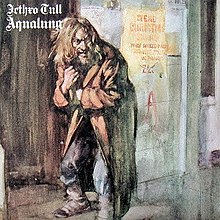
Jethro Tull are a British rock band formed in Blackpool, England, in 1967. Initially playing blues rock and jazz fusion, the band later developed their sound to incorporate elements of hard rock and folk to forge a progressive rock signature. The band is led by vocalist/flautist/guitarist Ian Anderson, and has featured a revolving door of lineups through the years which include significant members such as longtime guitarist Martin Barre, keyboardists John Evan, Dee Palmer, Peter-John Vettese and Andrew Giddings, drummers Clive Bunker, Barrie "Barriemore" Barlow and Doane Perry, and bassists Glenn Cornick, Jeffrey Hammond, John Glascock, Dave Pegg and Jonathan Noyce.

Thick as a Brick is the fifth studio album by the British rock band Jethro Tull, released in March 1972. The album contains a continuous piece of music, split over two sides of an LP record, and is a parody of the concept album genre. The original packaging, designed like a newspaper, claims the album to be a musical adaptation of an epic poem by fictional eight-year-old genius Gerald Bostock, though the lyrics were actually written by the band's frontman, Ian Anderson.
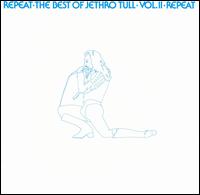
Repeat – The Best of Jethro Tull – Vol II is a 1977 greatest hits album from Jethro Tull, featuring one track which, up to the time of this album's release, had not been issued. The album's first volume was M.U. – The Best of Jethro Tull.

Ian Scott Anderson is a Scottish musician, singer and songwriter best known for his work as lead vocalist, flautist and acoustic guitarist of British rock band Jethro Tull. He is a multi-instrumentalist who, in addition to flute and acoustic guitar, plays keyboards, electric guitar, bass guitar, bouzouki, balalaika, saxophone, harmonica, and a variety of whistles. His solo work began with the 1983 album Walk into Light; since then he has released another five works, including the sequel to the Jethro Tull album Thick as a Brick (1972) in 2012, entitled Thick as a Brick 2.
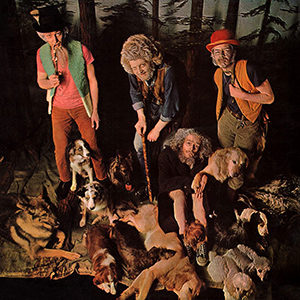
This Was is the debut studio album by the British rock band Jethro Tull, released in 1968. Recorded at a cost of £1200, it is the only Jethro Tull album with guitarist Mick Abrahams, who was a major influence for the sound and music style of the band's first songs. When the album was released the band was already performing at the Marquee Club in London, where other successful British groups, such as the Rolling Stones and The Who, had started their careers.

Stand Up is the second studio album by British rock band Jethro Tull, released in 1969. It was the first Jethro Tull album to feature guitarist Martin Barre, who would go on to become the band's longtime guitarist until its initial dissolution in 2012. Before recording sessions for the album began, the band's original guitarist Mick Abrahams departed the band as a result of musical differences with frontman and primary songwriter Ian Anderson; Abrahams wanted to stay with the blues rock sound of their 1968 debut, This Was, while Anderson wished to add other musical influences such as folk rock.

Benefit is the third studio album by the British rock band Jethro Tull, released in April 1970. It was the first Tull album to include pianist and organist John Evan – though he was not yet considered a permanent member of the group – and the last to include bass guitarist Glenn Cornick, who was fired from the band upon completion of touring for the album. It was recorded at Morgan Studios, the same studio where the band recorded its previous album Stand Up; however, they experimented with more advanced recording techniques.

Jeffrey Hammond, often known by his former stage name Jeffrey Hammond-Hammond, is an artist and retired musician best known for being the bassist of progressive rock band Jethro Tull from 1971 to 1975. With Jethro Tull, Hammond played on some of the band's most successful and well-known albums, including Aqualung (1971) and Thick as a Brick (1972).
"Aqualung" is a song by the British progressive rock band Jethro Tull, and the title track from their Aqualung (1971) album. The song was written by the band's frontman, Ian Anderson, and his then-wife Jennie Franks.

Aqualung Live (2005) is a live album by Jethro Tull, a live performance of Aqualung before an audience of 40 invited guests at XM Studios in Washington, D.C..

Living with the Past is a live album by Jethro Tull. The first half contains material from the Hammersmith Apollo performance on 25 November 2001 and features songs from different eras of Tull's history as well as some pieces from Ian Anderson's solo albums: "The Habanero Reel", "The Water Carrier" from The Secret Language of Birds and the instrumental "In the Grip of Stronger Stuff" from Divinities: Twelve Dances with God. Aside from "Cheerio", other recordings are collected in the second half.

"Locomotive Breath" is a song by the British progressive rock band Jethro Tull from their 1971 album, Aqualung.

Glenn Douglas Barnard Cornick was an English bass guitarist, best known as the original bassist for the British rock band Jethro Tull from 1967 to 1970. Rolling Stone has called his playing with Tull as "stout, nimble underpinning, the vital half of a blues-ribbed, jazz-fluent rhythm section".

Living in the Past is a double album quasi-compilation collection by Jethro Tull, which contains album tracks, out-takes, the "Life Is a Long Song" EP, and all of their non-LP singles except for "Sunshine Day"/"Aeroplane" (1968), "One for John Gee", "17" and the original version of "Teacher" that appeared in the UK as the b-side of "The Witch's Promise" in 1969. Also included are two live recordings taken from a performance at New York City's Carnegie Hall in November 1970.

"Living in the Past" is a song by British progressive rock group Jethro Tull. It is one of the band's best-known songs, and it is notable for being written in the unusual 5
4 time signature. The 5
4 time signature is quickly noted from the beginning rhythmic bass pattern.

"Hymn 43" is a song by British progressive rock group Jethro Tull. It is off their Aqualung album and was released as a single by Reprise Records.
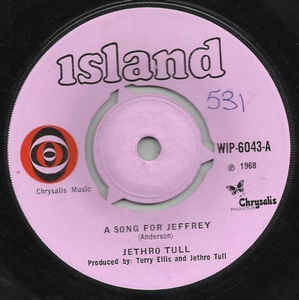
"A Song for Jeffrey" is a song recorded by the English progressive rock band Jethro Tull, released as their second single in the U.K. However, in the U.S., it was the B-side to "Love Story". It is written in honour of Ian Anderson's friend and future Jethro Tull bassist Jeffrey Hammond. Another version of the song was recorded for play on BBC radio.

Around the World Live is a video by English rock band Jethro Tull, released in 2013. It comprises in-concert footage recorded by the band from 1970 to 2005.
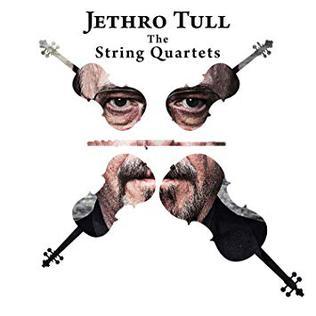
Jethro Tull – The String Quartets is a studio album featuring Ian Anderson, John O'Hara and the Carducci String Quartet, arranged by O'Hara. It was released on 24 March 2017.
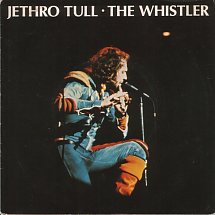
"The Whistler" is a song by English rock band Jethro Tull from their 1977 album Songs from the Wood. Written by frontman Ian Anderson, it features a folk-rock style that characterizes the Songs from the Wood album.
